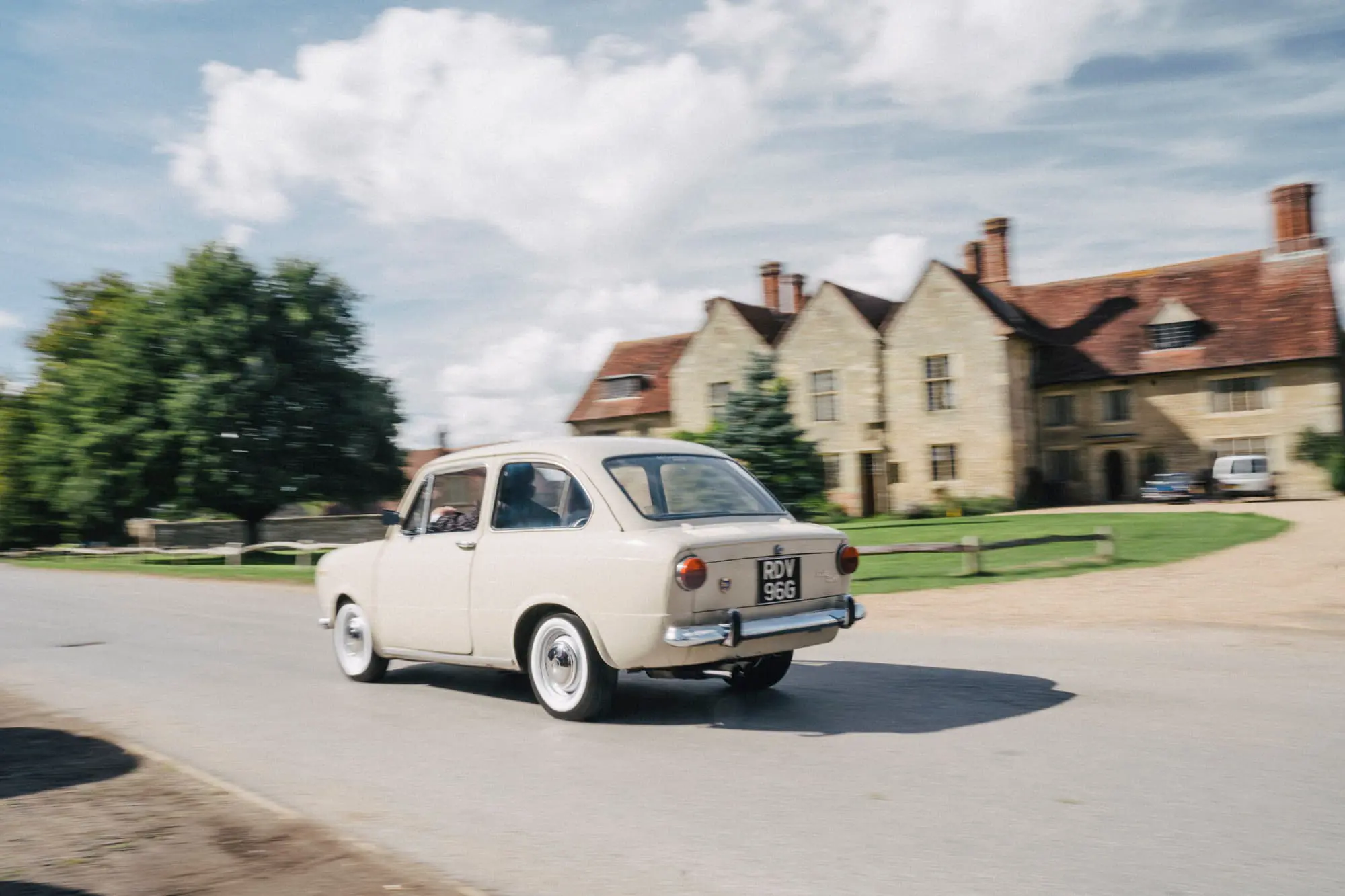MEET THE OWNER – LUCA LINFOOT AND HIS FIAT 850
26 October 2022
"I purchased the car on the spur of the moment, as I thought it looked really nice and something I hadn't seen before. I really went in blind, not knowing what I was even buying". What Luca Linfoot acquired was a 1969 Fiat 850, one of the last major rear-engine cars to hail from Turin.
In the 1960s and 1970s, the 850 was a fairly common sight on British roads, and some of us vividly recall the sound of that 843cc motor, the faint 'boiled rubber' aroma of the interior and the strip speedometer. But today, you are more likely to see the Fiat driven by Colin Welland during a television screening of Kes than in your local Sainsbury car park.
Fiat devised the 'Tipo 100G' for buyers who wanted a smaller car than their 1100D but still required a four-seater capable of the rigours of the Autostrada network. The parent car was the 600, and the 850 boasted a larger engine and a new all-synchromesh gearbox. It was also two inches wider and a foot longer, while Fiat relocated the fuel tank from the front to the rear.

The 850 made its bow in 1964, and Fiat naturally invested in an elaborate advertising campaign. This cinema commercial starring Gino Bramieri (think of an Italian Terry Scott) promoted the new model as ideal for the hard-working commuter - Avventura in città - Delia Scala e Gino Bramieri presentano la 850 \ 1964 \ ita -V - YouTube.
In the UK, the 850 cost just £549 10s 10d, compared with £493 7s 9d for the 600. It appeared a solid rival to the Mini and the Hillman Imp; discerning motorists contacted Fiat GB on ELGar 1951 to arrange a test drive.
Autocar thought the 850 "quite a formidable little tool in the cut-and-thrust fast-moving traffic" and Motor Sport hailed the "first-class gearbox, powerful brakes, and steering which is light and responsive and displays no lost motion in ordinary usage". They also believed it was "a delightful and useful little car; lady-drivers, including a learner-driver of 17, were especially warm in its praise, judging it safe and very easy to drive". No comment.
1965 saw the launch of the very appealing Coupe and Spider, and by 1968, the saloon was available in 'Special' form with a more powerful engine and front disc brakes. Finally, there was the semi-automatic 'Idroconvert' – do any survive in this country? Production of the saloon ended in 1972, although this was not quite the end of the story. SEAT commenced building its version in 1966, and it enjoyed an eight-year run. The last UK-market cars were actually imported from Spain.
Fifty years after the demise of the Italian-built 850, Luca was in search of a classic car. He had already owned a Mini and considered a Fiat 500 but then encountered RDV 96 G. "She was given a full suspension, engine and brake overhaul last month that my wallet still hasn't recovered from, but she drives well".
Luca is looking forward to learning more about his 850 - an important model in Fiat's history. In 1964 the company was already trialling FWD in the form of the Autobianchi Primula. In many respects, the Tipo 100G represented the last development of the 600 family. And after seeing this promotional film, who would not want to drive "The Car for Today"? – Fiat 850 (Giorgio Fossati, 1964) - YouTube
With Thanks To: Luca Linfoot
